College Sports
Carbon dioxide key to making a precise polymer safely
Watch a Cornell ice hockey game at Lynah Rink and you’ll spend three periods looking at – or rather, through – a methacrylate, a type of polymer used widely in paints, adhesives and glass substitutes. But making this material for applications more nuanced than blocking hockey pucks – for instance in drug delivery mechanisms – […]

Watch a Cornell ice hockey game at Lynah Rink and you’ll spend three periods looking at – or rather, through – a methacrylate, a type of polymer used widely in paints, adhesives and glass substitutes. But making this material for applications more nuanced than blocking hockey pucks – for instance in drug delivery mechanisms – requires a highly controlled process called anionic polymerization, which has been difficult and even dangerous to pull off.
Now, Cornell chemists have developed a user-friendly, scalable anionic polymerization process for methacrylate that’s precisely controlled and mediated by carbon dioxide (CO2). Useful for developing advanced applications of methacrylate, the process is already benefiting researchers such as engineers working to develop metal-free batteries and has potential future applications in biomedical settings.
“Making anionic polymerizations more accessible and safer will allow the scientific community to use these powerful methods to make next-generation materials,” said Brett Fors, the Frank and Robert Laughlin Professor of Physical Chemistry in the Department of Chemistry and Chemical Biology in the College of Arts and Sciences (A&S).
Fors is corresponding author of “Controlled Anionic Polymerization Mediated by Carbon Dioxide,” which published in Nature Chemistry on May 13. The first author is doctoral student Paige Jacky, M.S. ’23. Alexa Easley, Klarman Postdoctoral Fellow in chemistry and chemical biology (A&S) is a co-author.
Anionic polymerization is a powerful way to make materials with well-defined molecular structures, in which precise control allows scientists to understand how the material’s structure and properties are related, Easley said.
“For specialty applications, like drug delivery, if you’re submitting to the Food and Drug Administration a plan with an exact polymer, you need to have a very known structure, which Plexiglas does not have,” Easley said. “Glass substitute is great for what it’s doing, like protecting us at sports events, but it couldn’t be used for these biomedical applications, where there’s more need for structural control.”
Existing anionic polymerization methods are hard to do – and often dangerous, requiring toxic metals, chemicals that are explosive or spontaneously flammable in air, or other compounds that contaminate the final material. Some of these methods require very low temperatures and are sensitive to moisture and air.
In contrast, the Cornell team’s method, called CO2-mediated reversible deactivation anionic polymerization (CMAP), is simple, requiring one container. It uses an atmosphere of carbon dioxide plus an initiator, and it works through easy-to-achieve heating rather than deep cold. It yields well-defined materials. The simple synthesis of the initiator and “one-pot” nature of the process makes anionic polymerization an accessible tool that can be used outside specialized chemistry labs.
The keys to the method are carbon dioxide and heat, Jacky said. Inspired by recent research on reversible initiators – chemicals used to both start and stop a reaction – she turned to carbon dioxide: it’s relatively abundant, cheap and nontoxic in this context. Typically, carbon dioxide is considered a terminating agent in anionic polymerizations, but she discovered that “the process is reversable if you apply heat.”
Carbon dioxide starts and stops the reaction rapidly. It also protects and stabilizes the enolate, a key component that is very reactive.
The researchers tested the method using a setup Easley has developed during her Klarman Fellow research to monitor molecules for carbon dioxide capture.
Work still needs to be done to scale the CMAP method for industry, but the researchers believe this work will inspire future similar reversible deactivation strategies for other anionically polymerizable vinyl monomers. They also hope the method makes anionic polymerization of methacrylate materials more approachable to the broader scientific community.
It’s already in used by some researchers, including Easley. As a graduate student in engineering at Texas A&M University, Easley tried to make a polymer for a metal-free battery, but the only available method – using pyrophoric initiators – was not working.
“I tried multiple ways to do it and never could get it,” she said. But now, using CMAP, “we made it.”
Kate Blackwood is a writer for the College of Arts and Sciences.
College Sports
An Email Interview with Online Hockey Personality for Snapback Sports – Tim Kalinowski
There are a lot of great hockey content creators out there. I want to introduce you all to one in this piece. His name is Tim Kalinowski. Kalinowski is an on-air talent and personality for Snapback Sports. Kalinowski attended several memorable hockey games this season and, in typical creator fashion, shared them with hockey and […]
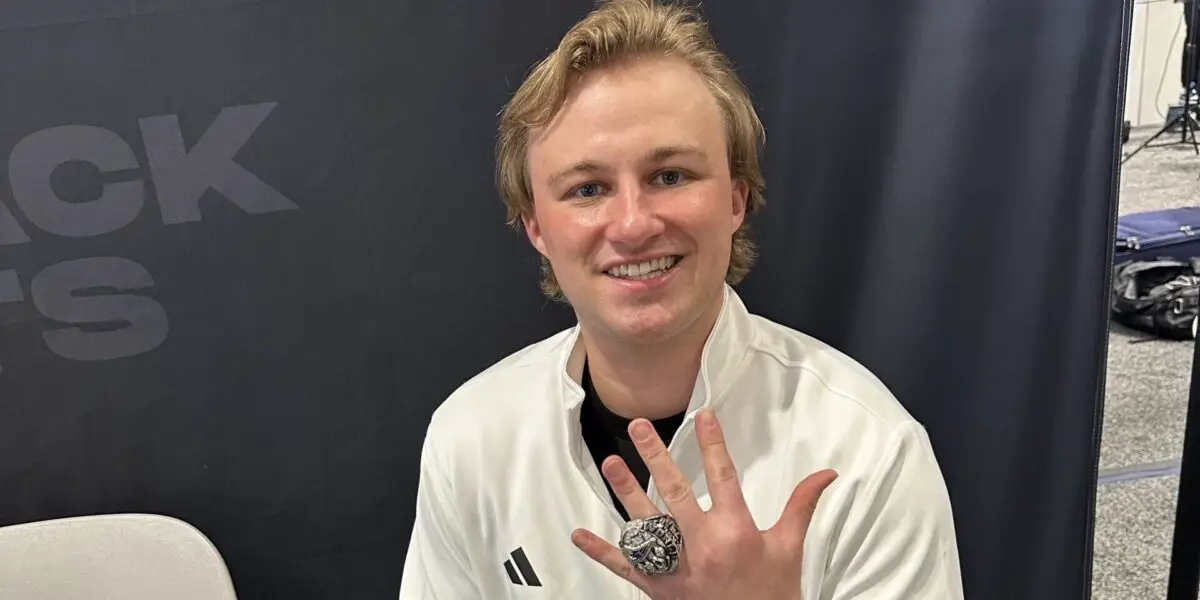
There are a lot of great hockey content creators out there.
I want to introduce you all to one in this piece. His name is Tim Kalinowski.
Kalinowski is an on-air talent and personality for Snapback Sports. Kalinowski attended several memorable hockey games this season and, in typical creator fashion, shared them with hockey and sports fans through his various social feeds.
Tim was kind enough to take time out of his busy schedule to tell us how he got into hockey growing up, when he knew he wanted to be in sports media, what it was like to attend incredible hockey games this season, and more. I hope you folks enjoy this!
PH: Growing up, how did you get into hockey?
TK: I was born in Vail, CO, where we lived for three years before moving to Massachusetts, which was
during that great Avalanche run in the early 2000s. My dad, despite never playing hockey, just
really loved the sport.
He had season tickets to the Aves, and my parents were the kind of people who brought their infant to hockey games. (Classic hockey parents). Surprisingly, I was very well behaved for that environment, so they figured I enjoyed it.
They famously brought me to the opening night of the Pepsi Center in 1999 when I was just a year old. Other than that, I believe the first thing my dad bought after I was born was a mini hockey net and stick, so I had a stick in my hands from the day I was born.
I am pretty sure he had me in skates before I learned to walk. He would hold me and drag my feet along the ice as he went skating on the pond or at frozen rinks in parks, and whatnot.
Because of all that, I do not remember getting “into” hockey because I was engulfed in it since the moment I was born, hahaha!
PH: Growing up, who was your favorite team (s) and player (s)? How about now?
TK: Because of the Colorado thing, I was first an Avalanche fan. My first word was “Joe Sakic.
(and that is not a lie)”.
When we moved to Massachusetts, I was about three years old, so it was all Boston Bruins. With that said, there was a time around high school when I became obsessed with wanting to be a sports media guy.
I still had the dream of taking my hockey career as far as I could. I also knew at one point I would need another skillset career-wise.
My uncle, Mike Lynch, was a famous sportscaster in Boston, so starting at a young age, he would take me to work with him a few times a year. This entailed things like being on the field/court or holding the microphone in scrums in the Bruins’ dressing room after games.
I have held the microphone for Tom Brady, Zdeno Chara, and David Ortiz, among others. As such, because I was around the media and journalism industry, I almost organically started to become more of a neutral fan.
The media has changed now to where more media people express their fandom, but when I was younger, I thought it would be a major red flag if one day people dug up tweets and saw that I was a Bruins fan or Red Sox fan, etc.
I beat it out of myself to be a more neutral fan. I also think having seen all of my Boston teams win championships in my lifetime has helped that, but I pretty quickly got to a point where I am not torn up in any way if Boston teams win or lose. I used to get teased in high school for saying “I am a fan of the game” as I was stirring the pot at times with my Masshole friends.
Overall, my life is far more enjoyable when the Boston teams are good because that means the people close to me are more interested, but otherwise as you see in my content one night I am in a Leafs jersey, the next I am in a Panthers jersey and people say “Aren’t you a Bruins fan?”
To be honest, I am not a Bruins fan anymore.
PH: As a hockey player, you played some junior hockey and even played club hockey at
Syracuse University. What were those experiences like?
TK: By the time I graduated high school and was doing a post-grad year at Phillips Exeter, I had
some DIII schools who were interested in me, and that was the route I was planning to go. Once I was playing juniors, however, and the decision on where to go to school was getting closer, I started to have some doubts about whether I wanted to go to a smaller college, which is obviously what a lot of DIII hockey schools are.
If I was not going to play in the NHL, why would I go to a school I did not want to go to outside of hockey? The Syracuse Club hockey team reached out to me and was pretty much recruiting me, and my head is telling me that I am not going to play club hockey, as I am better than that.
I ended up putting on one of their games and quickly realized this was not what I thought it was. You see, a lot of people do not understand that the top 25 or so teams in club hockey are damn good.
Everyone is fast, big, and played junior hockey. It is a whole batch of players who were making similar decisions that I was.
And to top it off, by going to Syracuse, I would have the opportunity to follow my sports media dream by going to the Newhouse School there. It was a perfect match, and funny enough, hockey-wise, I scored two goals in my first game as a freshman and then was a scratch three weeks later for two months.
It was quite the reality check of how good club hockey can be. It is something I believe in in terms of promoting the sport.
In the summer, I used to skate with a lot of my friends who played DI, and I found it so flattering how many of them were just as interested in how my season was going as they were about how someone who was playing at BU was doing. The fact that they did not see me as an inferior player made me feel proud.
People look down on club hockey mostly because they do not understand it. The higher-level teams like Syracuse are not glorified beer league squads.
We have a paid coaching staff. We traveled the country, we missed out on every fun college weekend and party for five months of the year, and we practiced and trained every day.
It is honestly a fight I am sick of having because people just don’t get it.
PH: At what point did you realize that you wanted to work in the media side of sports?
TK: I probably answered a lot of this in the second question, but the experiences I had with my uncle. I am one of those people who, since I was in high school, have read the paper every day.
I love sports coverage probably more than I like sports. From the second I wake up to when I go to bed,
Boston sports radio is playing in my headphones, which is something that I thought was normal, but upon meeting other human beings, I realized that I might have a sports sickness, haha!
An example would be my love with the Toronto Maple Leafs. I talk a lot about the Toronto Maple Leafs to the point where people think I am a fan when I am not.
I am a fan of the story, always having the hype and never getting it done in what is usually in horrific fashion. I listen to Toronto radio every day, and I read every article.
When they lose a big game, it is like I am refreshing Twitter all night because I am waiting to hear the postgame quotes, and I am salivating reading the Monday morning quarterbacking and endless postmortem.
But just to get back to my career, I almost get embarrassed when people ask what I do
because the reality is I make TikToks and am technically a content creator (a title I hate). That is because I think there is a natural undertone of trying to be an influencer or thinking you are so important that you videotape yourself.
The reality is this is not what I wanted to do. If I could have it my way, I would be a columnist for the Boston Globe and I would travel to morning skates, be on a beat, and I would just write my thoughts and opinions on the team/game.
That is just not how it works anymore. At the advice of one of my college friends, he said to me, “Why don’t you just make a TikTok and just say into the camera what you would want to write about”, which is what I did.
It is what helps me sleep at night knowing sure, I may be on TikTok, but I am doing it through the lens of an old newspaper columnist.
PH: How did you become an NHL betting analyst over at the Action Network? What was it like to make hockey content for them?
TK: Action Network was my first real job. I started as an intern the summer going into my senior year of college and I ended up being there for three years.
I was working about 30 hours a week for them while I was in college. I loved it because I was a fan of Action before I started working there.
I have been betting pretty much every day since I was 16, so I have a pretty big betting background, which before the massive legalisation surge was a big feather in my cap to have as an intern.
I was not even working on anything really hockey related until after being there for two years. I was sent to work an event with Michael Leboff, Action’s lead NHL guy at the time.
We had never crossed paths at work (we were fully remote by then) and we got into a conversation about the Maple Leafs and he could not believe how much I knew about hockey and that I bet on it on a regular basis.
It was one of those “did we just become best friends?” moments. A day later, he said, “Hey, do you want to join me and Nick Martin on our NHL betting pod?”
I joined the pod, which we did three times a week for over a year. It was probably the most enjoyable thing I have done in my career because I loved working with Mike and Nick so much.
It also helped me improve as a hockey bettor because I was not very good until I began doing the show. I
had the right understanding, but I needed help with my process.
I owe them a lot for how much they taught me. The three of us are still very tight even though we are all in different places now.
PH: Tell us about how you got a gig with Snapback Sports.
TK: Snapback was started by Jack Settleman, who is pretty big in the sports influencer world. He used to work at Action, but we missed each other.
Three years ago, I was in Phoenix doing some work with NASCAR at their championship race, and Jack ended up being in my little group. I had no idea who he was at the time, but we talked for a little bit, and we went to dinner one of the nights we were there, but that was it.
I had not spoken to him for a while, and then all of a sudden last spring (about three years after that dinner), he texted me and said he wanted me to come work for him at Snapback. I was very nervous to make the move because I do not like change.
It was probably one of the best decisions of my entire life. In just one year at Snapback, I have been to Ireland, Canada, the CFB National Championship, Super Bowl Radio Row, the Stanley Cup Final, and a million other things in between.
I could not be happier.
PH: In terms of hockey, what are you trying to do at Snapback Sports?
TK: Interestingly enough, when I first joined Snapback, I kinda assumed I was going to have to put
my hockey content on the back burner for a little. Snapback is still a small company, and as we see in the sports world, football takes up most of the airtime and resources, but I am a huge football fan, so I was willing to accept that compromise in the beginning.
When the 4 Nations Face-Off happened, everything changed. On the Snapback sports YouTube channel we travel the world going to sporting events to try to find “the greatest sports experience in the world.”
A majority of our experiences have been dominated by football, especially college football. However, during the football offseason, Snapback tries its best to do other experiences like NASCAR, baseball, basketball, etc.
They are all fun, but it is difficult to pull off compared to the cadence and consistency of the football season. So, as football was winding down this season, it was around December, and we were building our winter/spring schedule for events outside of football, which is when I suggested the 4 Nations Face-Off.
As a hockey guy, I was pretty pumped for it, but like a lot of us, I did not know what to expect. This was also my first pitch to Snapback that was not football related, so it was a bit of a gamble on my end to convince my bosses at Snapback, who are hockey casuals, that this was gonna be at the very least a noteworthy event.
Long story short, I wanted to go to that Saturday night USA-Canada game in Montreal, but we were working on a deal with the NHL, and they said they had already filled their allotments of tickets/passes. They offered us championship access instead, which I was very disappointed by because it was not guaranteed to be USA-Canada.
Those famous first 15 seconds happened in Montreal and watching from home, I knew the anticipation for the potential championship was going to be just as insane. And with that, the 4 Nations Face-Off had the full attention of Snapback and everyone else in the sports world.
I went from what felt like going out on a limb, asking my bosses to send me to this thing and all of a sudden, it was like not only are we sending you, but your content better deliver because this is the hottest ticket in town now.
PH: What was it like to experience the 4 Nations Face-Off? Did you think it would be as good as it
turned out to be?
TK: I probably answered this in the question above, but the experience itself was insane. Again, I was so disappointed to not be in Montreal for that Saturday night game, but it still felt like a small victory that so many people were talking about hockey, which was the biggest thing for me.
Someone my age (27) has very few international hockey memories, and I have always been jealous of people like my dad who can go on and on about the Canada Cup and things like that. It felt cool to have a memory of my own.
I was in the camp that it would be competitive and that the players would try and all that because they are hockey players and they have a lot of national pride. What I was wrong about is that I thought it would be a big deal just for the hockey world and for the few of us hockey sickos on Twitter and that is it.
When it was leading shows like “Get Up” on ESPN, I was floored. It was also cool to have my dad with me there as well.
As I said, people were not sure how it was going to go. We, as a company, were like “Yeah, Tim. Just go have fun with it”.
I invited my dad weeks before the tournament started, and then all of a sudden it blew up. I would normally have had a producer traveling with me, but then I could not just uninvite my dad, so he had to be my producer and had to rise to the occasion in a big spot, which he did.
PH: Speaking of memorable hockey events, you were at UBS Arena when Ovechkin set the new
NHL record for goals scored in breaking Gretzky’s record of 894 goals. What was that experience like for you as a longtime hockey fan?
TK: That was beyond my wildest dreams. That is probably the coolest thing I have ever seen in person.
Again, similar to the stories I have been telling, hockey did not seem like a big priority at Snapback. I am not saying this in a bad way, but hockey is a niche sport.
After the momentum of the 4 Nations Face-Off, leading right into Ovie was just the perfect storm for me, but I still had reservations. Sure enough, Jack was like, “Well, we have got to get you there to see the record broken, right?” I was like “Yeah, of course… Are you serious?”
For me to have that opportunity to see history in person was hard to put into words. I grew up in a sports family, so I have always kinda been hit over the head with “You missed the good ole days,” like Mike Tyson, Pete Rose’s hits record, the Summer of 98, Miracle on Ice, and all of that.
To now have my kind of “I can tell my kids I was there for that moment” was surreal. And that is just as a sports fan, not even as a Capitals fan or a die-hard Ovie follower. It was just sports.
On top of that, the fact that I got Ovoe and the 4 Nations Face-Off in a year when I was not expecting to do much hockey content. It made it all so much sweeter.
PH: Is there anything else that you would like to share with hockey fans?
TK: I would just say that recently I went through this epiphany that hockey is so obsessed with
“growing the game”, and a lot of leagues are, and that is fine. I want more people to learn and find
out how great this game is.
If Colorado did not have a team, who is to say I ever would have fallen in love with hockey? But in the same breath, if you are already a fan, do not let that get in the way of just enjoying the sport yourself and sharing that with others you know who love it.
You do not have to sell someone who is not a hockey person 24/7. There are times for that, but not at the risk of exhausting yourself and missing the essence of why you love it in the first place.
I got into that cycle early in my career, and it has been far more liberating to just enjoy the sports you love. For a while, I felt like I always had to convince someone they had to like hockey before I talked about it, but that is not the case.
If you like hockey, then just talk about hockey, and more often than not, the growth will take care of itself. I have had countless people tell me they have become a hockey fan just from seeing my passion for the sport and for me that is pretty damn good.
Discover more from Inside The Rink
Subscribe to get the latest posts sent to your email.
College Sports
Red Hot Hockey Returns for 10th Edition at Madison Square Garden
Story Links NEW YORK – The Kelley-Harkness Cup will be up for grabs for the 10th time this fall as Red Hot Hockey returns to Madison Square Garden on Saturday, Nov. 29, as announced today by Boston University Director of Athletics Drew Marrochello and Cornell University’s Meakem & Smith Director of Athletics […]
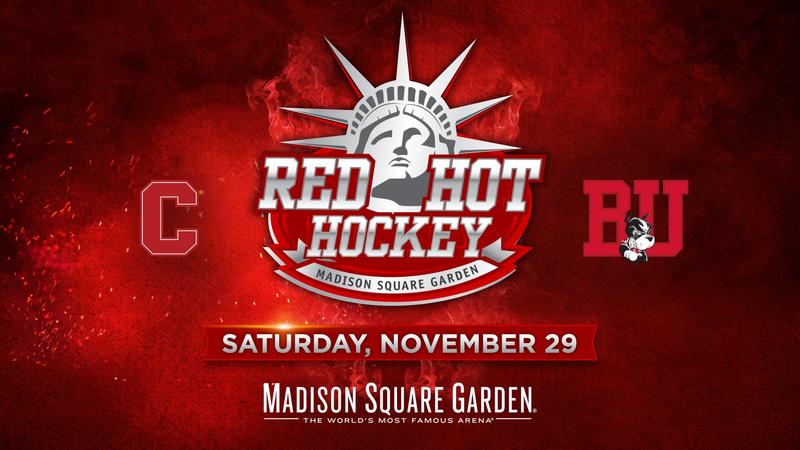
NEW YORK – The Kelley-Harkness Cup will be up for grabs for the 10th time this fall as Red Hot Hockey returns to Madison Square Garden on Saturday, Nov. 29, as announced today by Boston University Director of Athletics Drew Marrochello and Cornell University’s Meakem & Smith Director of Athletics and Physical Education Nicki Moore.
The passionate fan bases of longtime rivals Boston University and Cornell will once again gather in New York City over Thanksgiving weekend, as Red Hot Hockey has become one of the premier events in college hockey since its debut in 2007.
Puck drop for this year’s contest is set for 8 p.m. Tickets for Red Hot Hockey will be available starting Wednesday, June 4, at noon and can be purchased at the Madison Square Garden box office, all Ticketmaster outlets, through Ticketmaster charge by phone (866-858-0008), and online at www.ticketmaster.com and www.msg.com.
Fans can also purchase tickets for the Boston University or Cornell fan sections. Student tickets will be available at a discounted price at the Agganis Arena box office (Boston University) and the Cornell Athletic Ticket Office in Bartels Hall.
“It’s amazing to think that we’re getting ready to return to Madison Square Garden for the 10th edition of Red Hot Hockey,” Marrochello said. “The success of this event is a testament to not only our wonderful partners in Cornell and Madison Square Garden, but to the fans of both schools who have made this event one to circle on the calendar and to the two hockey programs who continue to be among the best in the country. We’re looking forward to spending another Thanksgiving weekend in New York City with Terrier Nation.”
“The Red Hot Hockey series has been circled on every Cornellian’s calendar every other year since 2007, and the 10th contest at Madison Square Garden will be extra special,” added Moore. “We’re excited for Casey Jones to lead the team to New York City for the first time in a rematch of the 2025 NCAA Regional Final. Featuring two premier programs, two passionate fan bases, and an iconic venue, the game will be an incredible experience for alumni, fans, and student-athletes alike. We look forward to the Cornell community coming together in the Big Apple for another unforgettable chapter in this historic rivalry.”
More than half of the previous Red Hot Hockey games have taken place before sold-out crowds at Madison Square Garden. The inaugural event, attended by 18,200 passionate students, alumni, parents, and fans, was a resounding success. Held on Nov. 24, 2007, it featured members of the 1980 gold medal-winning U.S. Olympic hockey team, including Mike Eruzione, Jack O’Callahan, and David Silk from BU, along with Joe Nieuwendyk, a member of the Cornell Athletics and Hockey Halls of Fame.
After Boston University went undefeated in the first five Red Hot Hockey meetings (3-0-2), Cornell has won the last four meetings, including a 2-1 victory in 2023, where the Big Red scored two goals in the third period. The Terriers won in 2007, 2011, and 2013, while the rivals skated to ties in 2009 and 2015. The Kelley-Harkness Cup, which honors legendary coaches Jack Kelley (BU) and Ned Harkness (Cornell), was introduced 10 years ago.
The rivalry between BU and Cornell began on Jan. 10, 1925, when the Terriers secured a 7-2 victory on Beebe Lake in Ithaca, and includes matchups in the NCAA title games in 1967 and 1972. Since the Terriers departed from ECAC Hockey to join Hockey East in the 1984-85 season, the two schools have met sporadically before the first Red Hot Hockey event. Madison Square Garden, home to the NHL’s New York Rangers and NBA’s New York Knicks, has served as the venue for this showcase since its inception.
BU and Cornell are the only two schools in Division I men’s hockey to win at least one NCAA Tournament game in each of the last three years, with the Terriers making it to the Frozen Four each time. The Terriers defeated the Big Red in an NCAA regional final twice over the past three seasons, including a 3-2 overtime victory in Toledo, Ohio, this past March on their way to the national title game. Each of the last 12 meetings between the Big Red and the Terriers has been decided by two goals or fewer, including four consecutive one-goal games.
“Celebrating the 10th edition of the biennial Red Hot Hockey underscores the strong appetite for college hockey in New York City,” said Joel Fisher, executive vice president, Marquee Events and Operations, MSG Entertainment. “As the home of the very best in sports and entertainment, Madison Square Garden is proud to once again host the storied rivalry between Boston University and Cornell for this milestone game, and we look forward to another electric atmosphere with New York’s passionate college hockey fans.”
Both schools are perennial powerhouses in college hockey, combining for 355 victories and a .650 winning percentage over the past decade. Boston University has won the national championship five times (1971, 1972, 1978, 1995, and 2009), while Cornell has claimed the title twice (1967 and 1970). Together, these two schools have produced over 100 NHL players, including prominent names such as New York Rangers president Chris Drury, new Rangers head coach Mike Sullivan, Jack Eichel, and Macklin Celebrini (BU), along with Ken Dryden, Joe Nieuwendyk, and current NHL players Morgan Barron and Sam Malinski (Cornell).
“Experiencing playing at MSG for the first time since 2009 was better than I remembered,” said Casey Jones ’90, who will be entering his first season as the Jay R. Bloom ’77 Head Coach of Cornell Men’s Ice Hockey. “What this game has come to mean to our program and our alumni is incredible. The Lynah Faithful are the best fans in college hockey and you can see how athletics can connect our alumni to our university. This year with BU, it should be another great battle in ‘The World’s Most Famous Arena.'”
“We’re excited to return to Madison Square Garden in November,” said fourth-year BU head coach Jay Pandolfo ’96. “It’s an incredible opportunity to not only play for a trophy on such a big stage but to face off against one of the top programs in the country. This rivalry brings out the best in both teams, as evidenced by all the one-goal games we’ve played over the past three seasons. The atmosphere is always electric and we expect another fantastic crowd at MSG.”
College Sports
Beasley, Carlen Remain on College Football Hall of Fame Ballot
WVU Athletic Communications Football June 02, 2025 01:39 PM John Antonik Story Links MORGANTOWN, W.Va. – West Virginia University consensus All-American cornerback Aaron Beasley and former coach Jim Carlen remain on the ballot for this year’s College […]
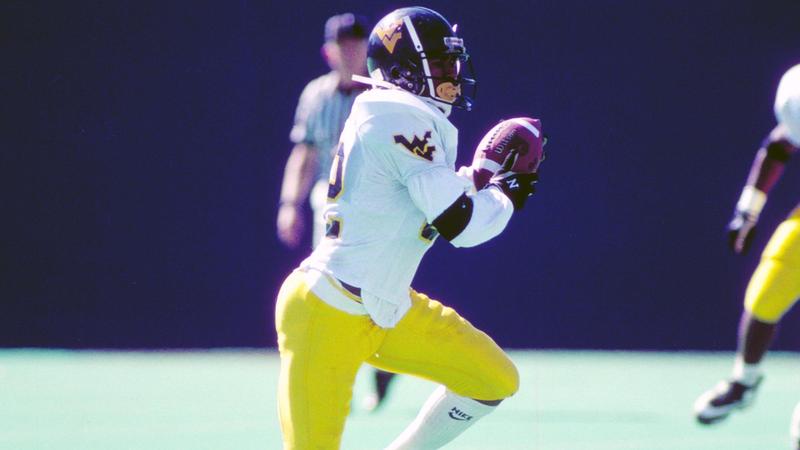

WVU Athletic Communications
Football
John Antonik
MORGANTOWN, W.Va. – West Virginia University consensus All-American cornerback Aaron Beasley and former coach Jim Carlen remain on the ballot for this year’s College Football Hall of Fame released by the National Football Foundation (NFF) earlier today.
Beasley, from Pottstown, Pennsylvania, led the nation with 10 interceptions in 1994 before earning consensus All-America honors in 1995.
He was a two-time First Team All-Big East choice who helped the Mountaineers to an undefeated regular season and a 1993 Big East title as a sophomore. His 19 career interceptions for 367 yards rank second in school history as do his 38 career pass breakups.
Beasley picked off a career-high three passes against Virginia Tech on Sept. 22, 1994, and broke up a career-best four passes in a 24-13 win over Temple on Sept. 9, 1995.
He played nine NFL seasons with the Jacksonville Jaguars, New York Jets and Atlanta Falcons and was inducted into the WVU Sports Hall of Fame in 2009.
 Carlen, a Cookeville, Tennessee, native, coached 16 college football seasons at West Virginia, Texas Tech and South Carolina from 1966-81. His first four years at WVU from 1966-69 were transformational for a struggling Mountaineer grid program.
Carlen, a Cookeville, Tennessee, native, coached 16 college football seasons at West Virginia, Texas Tech and South Carolina from 1966-81. His first four years at WVU from 1966-69 were transformational for a struggling Mountaineer grid program.
His final season at West Virginia in 1969 saw the Mountaineers win 10 games, defeat South Carolina in the Peach Bowl and return to the national rankings for the first time in 14 years. He had winning seasons in three of his four years at West Virginia and finished with a 25-13-1 record.
The Georgia Tech graduate had winning campaigns in four out of the five seasons he coached at Texas Tech and led the Red Raiders to two Sun Bowls, one Gator Bowl and a Peach Bowl from 1970-74. Carlen’s best team at Tech in 1973 posted an 11-1 record, defeated 19th-ranked Arizona during the regular season, topped 14th-ranked Tennessee 28-19 in the Peach Bowl and ended the year ranked 11th in the country.
The following year, Carlen’s team upset sixth-ranked Texas 26-3 and tied Vanderbilt 6-6 in the Peach Bowl.
Afterward, Carlen left Texas Tech for South Carolina where he revitalized the Gamecock program. Carlen had 8-4 seasons in 1979 and ’80 and coached Heisman Trophy winner George Rogers while he was there.
In his final campaign at South Carolina in 1981, his team upset third-ranked North Carolina and finished the year 6-6. He had 13 winning seasons out of 16 and owns a 107-69-6 career record with eight bowl appearances.
Carlen died July 22, 2012 in Hilton Head, South Carolina, at age 79.
A total of 79 players and nine coaches are on this year’s ballot from the Football Bowl Subdivision and 100 players and 35 coaches are represented from the divisional ranks.
The ballot was mailed today to more than 12,000 NFF members and current Hall of Famers whose votes will be tabulated and submitted to the NFF’s Honors Court, chaired by NFF board member and College Football Hall of Famer Archie Griffin.
The Honors Court is comprised of athletic administrators, Hall of Famers and media members. The announcement of the 2026 College Football Hall of Fame Class will be made in early 2025, with specific details to be announced by the NFF in the future.
Fourteen former players and coaches associated with West Virginia University are currently in the College Football Hall of Fame. The most recent inductee was All-American running back Steve Slaton, who will be officially enshrined this year.
College Sports
CSB and SJU alums cheer on daughter as Frost win second-straight title
The Zumwinkle family Over the years, Mike and Lori Zumwinkle have gotten used to watching their daughter Grace play hockey on the biggest stages in the biggest moments. But that doesn’t make it any less exciting … or nerve-wracking. And this season’s Professional Women’s Hockey League (PWHL) Finals may have been the most dramatic stretch […]

Over the years, Mike and Lori Zumwinkle have gotten used to watching their daughter Grace play hockey on the biggest stages in the biggest moments.
But that doesn’t make it any less exciting … or nerve-wracking.
And this season’s Professional Women’s Hockey League (PWHL) Finals may have been the most dramatic stretch of games yet.
Grace, a forward for the Minnesota Frost, helped lead her team past the Ottawa Charge three games to one in a best-of-five series in which all four games were decided in overtime.
That included a 2-1 Frost victory in triple overtime before a crowd of over 8,000 at Xcel Energy Center in St. Paul in Game 3 on May 24, and a 2-1 overtime win to wrap up the title before a crowd of over 11,000 at home on May 26.
The Frost, who were honored with a parade on May 28, have now won back-to-back titles in each of the league’s first two seasons.
“We were definitely on the edge of our seats the whole time,” said Mike, a 1986 Saint John’s University graduate. “They were playing against a hot goalie (in Ottawa’s Gwyneth Philips, who won the Ilana Kloss Playoff MVP Award). But they got the job done.”
Thanks in part to Grace, who had an assist and a career-best 10 shots-on-goal in the Game 4 win. She played college hockey at the University of Minnesota, where she was a two-time All-American and four-time All-WCHA selection who ended her career eighth on the program’s all-time scoring list with 209 points (109 goals, 100 assists).
But her father was a two-time All-MIAC pick for the Johnnie football team and was named the 2022 winner of the Bob Basten Award, which is bestowed annually upon a former SJU football player who has exhibited outstanding leadership traits. He also has been involved in his community and with his alma mater, has carried a sense of fair play beyond the football field, and has demonstrated an overall commitment to excellence.
Her mother, meanwhile, is a 1987 College of Saint Benedict graduate who played tennis for the Bennies and is a former member of the CSB Board of Trustees.
So, Grace said the CSB and SJU community has had a big impact on the family – which also includes her two sisters – over the years.
“My sisters and I credit all of our success to our parents and the way they raised us,” she said. “The values they instilled and the way they’ve lived their lives. The experience they had at CSB and SJU helped shape a lot of that. Those schools hold a special place in our family.”
Grace – who was named PWHL rookie of the year in the league’s first season in 2024-25 – is not the only Frost player with ties to CSB and SJU. Defender Lee Stecklein is the sister of 2017 SJU graduate Ross Stecklein, who played four years of hockey for the Johnnies. Lee, a three-time Olympian and a teammate of Grace’s at the 2022 Winter Games in Beijing, was the Frost’s postseason scoring leader this season with eight points (four goals, four assists) in eight games played.
The two were also part of Team USA, which took home a gold medal at the 2025 IIHF Women’s World Championships in April – beating Canada 4-3 in overtime in the championship game.
“You never get sick of winning,” Grace said of the Frost’s success. “Each year (of the PWHL) has been different and unique, but it’s been such an exciting time to be part of women’s hockey and to see the growth this league has experienced these past two seasons.
“I know I’ll look back 10 or 15 years from now and be so grateful to have been part of this first group.”
The PWHL’s success has been part of a boom period for women’s professional athletics, going hand-in-hand with increased interest in the WNBA and newcomers like Caitlin Clark, Angel Reese and Minnesota-native Paige Bueckers.
“It’s been really gratifying to see women’s sports finally getting the recognition it’s always deserved,” Grace said. “The support we’ve gotten has really meant a lot to us.”
Given her parents’ athletic backgrounds, it’s not surprising Grace and her sisters were drawn to sports at an early age. Older sibling Anna Zumwinkle played hockey and golf at Division III Middlebury (Vermont) while Emily Zumwinkle played three seasons at the University of Minnesota before transferring to Ohio State for her senior season this past year.
“Sports were always big around our house,” said Grace, whose cousin Jane Bodensteiner also played tennis at CSB before graduating in 2024.
“In fact, it can still get a little competitive when we’re all on the golf course or the pickleball court. Everyone wants to win.”
Grace has done plenty of that throughout her hockey career and her parents couldn’t be prouder.
“Being a female in the workforce, I’ve tried to be a leader for other women,” Lori said. “I look at her and she’s doing the same thing, paving the way for all these little girls who come to the games. It’s so adorable to watch them run up to her with their signs and merchandise and want her autograph. It’s so impressive and rewarding to think she’s giving these girls something to aspire to.”
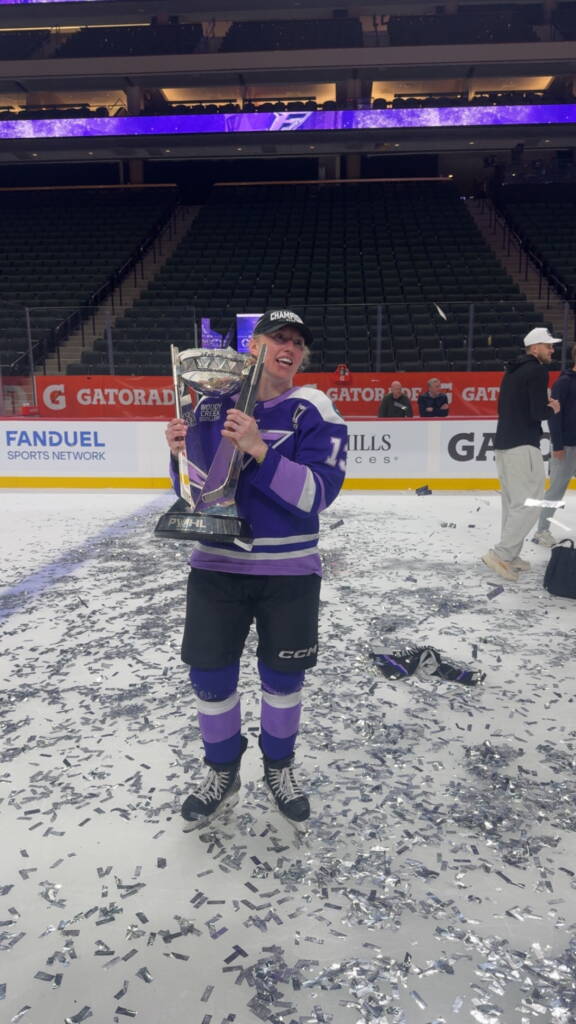
College Sports
Women’s Hockey adds Joakim “U.K.” Flygh as an Assistant Coach
PROVIDENCE, R.I. – Brown women’s hockey head coach Melanie Ruzzi has announced the hiring of Joakim “U.K.” Flygh as a new assistant coach for the program. Flygh will focus on the development of the Bears’ defensive core, will oversee the penalty kill and will play a large role in recruiting. Flygh joins the Bears having […]
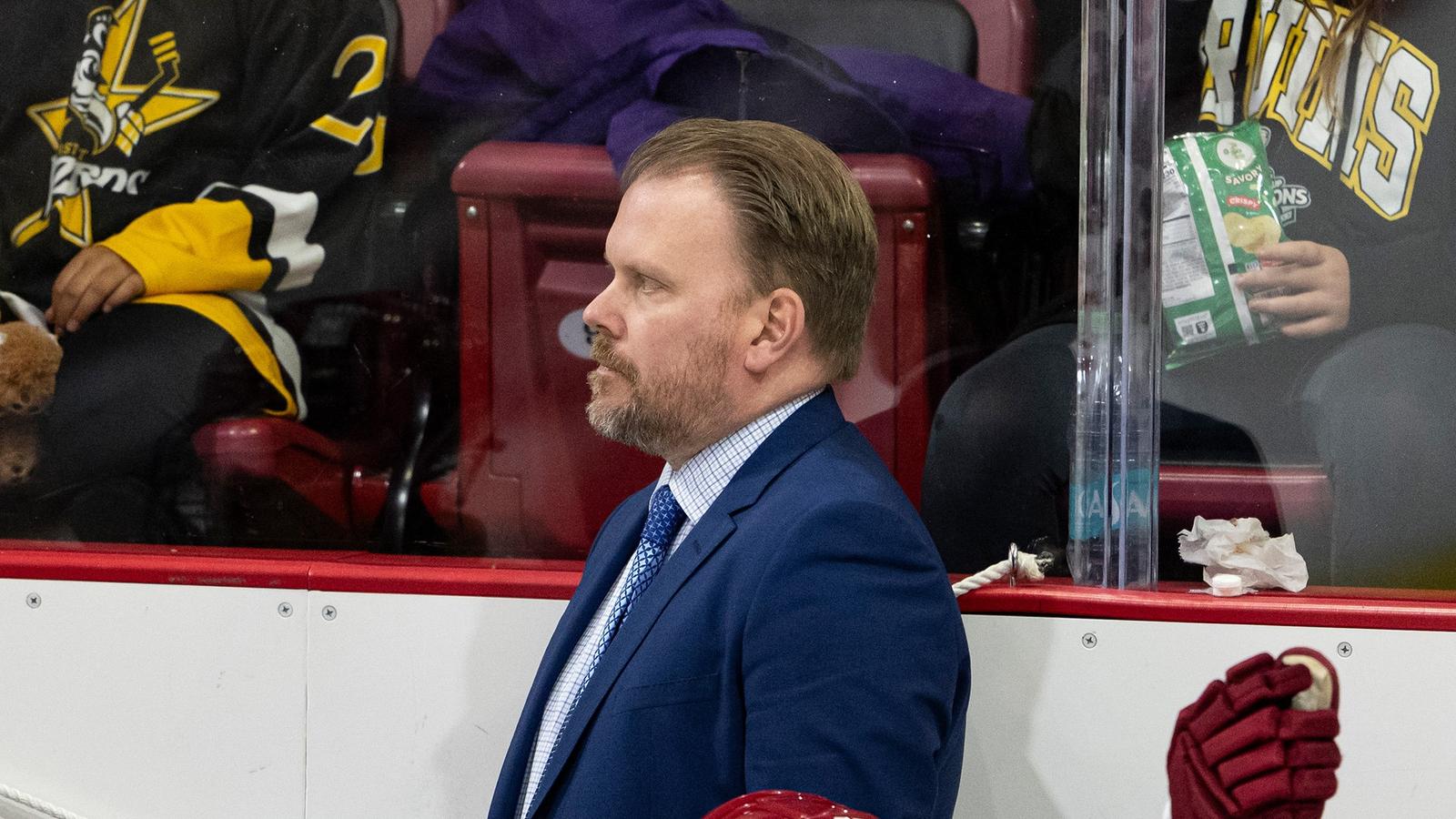
Flygh joins the Bears having spent the last season on the bench as an assistant for the Harvard women’s program. Flygh and Ruzzi have worked together at two different stops with the duo working together for three years at Harvard and for one season at Yale.
“Being able to welcome U.K. to our program is a home run for our players and our staff. Brown Hockey is on a tremendous climb and the addition of his knowledge, experience and passion for the game raises the level for all of us. Above all else, U.K. is someone who appreciates the opportunity to make a positive impact on the experience of the players. I couldn’t think of a better fit for Brown Hockey, and I am proud to get the chance to work with him once again.”
Prior to joining Harvard’s staff, Flygh had a successful ten-year tenure as the head coach of the Yale women’s ice hockey program from 2009-2019. In 2014-15, Flygh led the Bulldogs to their best winning percentage in eight seasons, finishing with the second-most overall wins in school history (15). Yale also made its second straight ECAC Hockey Championship playoff appearance under Flygh after the team tied the school record for wins in conference games with 12 and scored the second-most goals in a season in school history (93). In 2013-14 the Bulldogs made their first ECAC Hockey Championship playoff appearance since 2008, and their first postseason win since 2005.
Flygh’s nine-year career as an assistant coach prior to Yale was marked by consistent success; teams he coached for had a combined winning percentage of .701 (176-69-21) and he was a part of six seasons of 20 or more wins. Flygh went to Yale after three seasons as an assistant at Harvard where he helped the Crimson to a 71-20-8 overall record, two NCAA tournament appearances, two ECAC Hockey regular season championships, two Beanpot tournament championships and one ECAC Hockey tournament championship.
Flygh joined Harvard’s staff in 2007 after spending three seasons as an assistant at Minnesota Duluth. There he worked with the Bulldog defensemen and penalty-kill unit. In Flygh’s three seasons in Duluth, the Bulldogs made the NCAA tournament every year, advanced to the NCAA title game in 2007 and posted a total record of 72-26-9. Over Flygh’s tenure, UMD ranked fourth nationally in goals allowed per game and third in penalty killing. During his first season in 2004-05, the UMD penalty kill allowed just 16 goals in 206 power plays, operating at a 92.2-percent efficiency.
Before taking the position at Minnesota Duluth, Flygh worked three seasons as an assistant coach, including one as a graduate assistant, with the men’s ice hockey team at New England College. He helped the Pilgrims to a combined 53-23-4 record and three second-place league finishes during his three years behind the bench.
Flygh was a standout defenseman as an undergraduate at New Englandand was the Pilgrims’ defensive player of the year. He went on to play professional hockey in Sweden for the Lysekil Vikings.
A native of Tyringe, Sweden, Flygh is a 2000 graduate of New England College with a bachelor’s degree in kinesiology. He earned a master’s degree in organizational management from New England in 2002.
BROWN UNIVERSITY SPORTS FOUNDATION
The Brown University Sports Foundation (BUSF) is the backbone of our athletics program, playing a crucial role in enhancing the student-athlete experience. This is possible through philanthropic support from our alumni, parents, fans, and friends. Your gift through the Sports Foundation can immediately impact today’s Brown Bears, helping them excel in the classroom, in competition, and, most importantly, in the community. Please click here to learn more about how you can support the Bears.
FOLLOW US ON SOCIAL
For the latest on Brown Athletics, please follow @BrownU_Bears on X and @BrownU_Bears on Instagram. Like BrownUBears on Facebook and subscribe to the BrownAthletics YouTube channel.
College Sports
Texas A&M strengthens back line with signing of Mia Scranton from Cal Baptist
BRYAN-COLLEGE STATION – The Texas A&M soccer team bolstered its back line with the addition of former California Baptist defender Mia Scranton, head coach G Guerrieri announced. Scranton helped the Lancers post a 0.84 goals against average and 15 shutouts the last two seasons while playing under the tutelage of current Aggie assistant coach Tim Strader. During […]
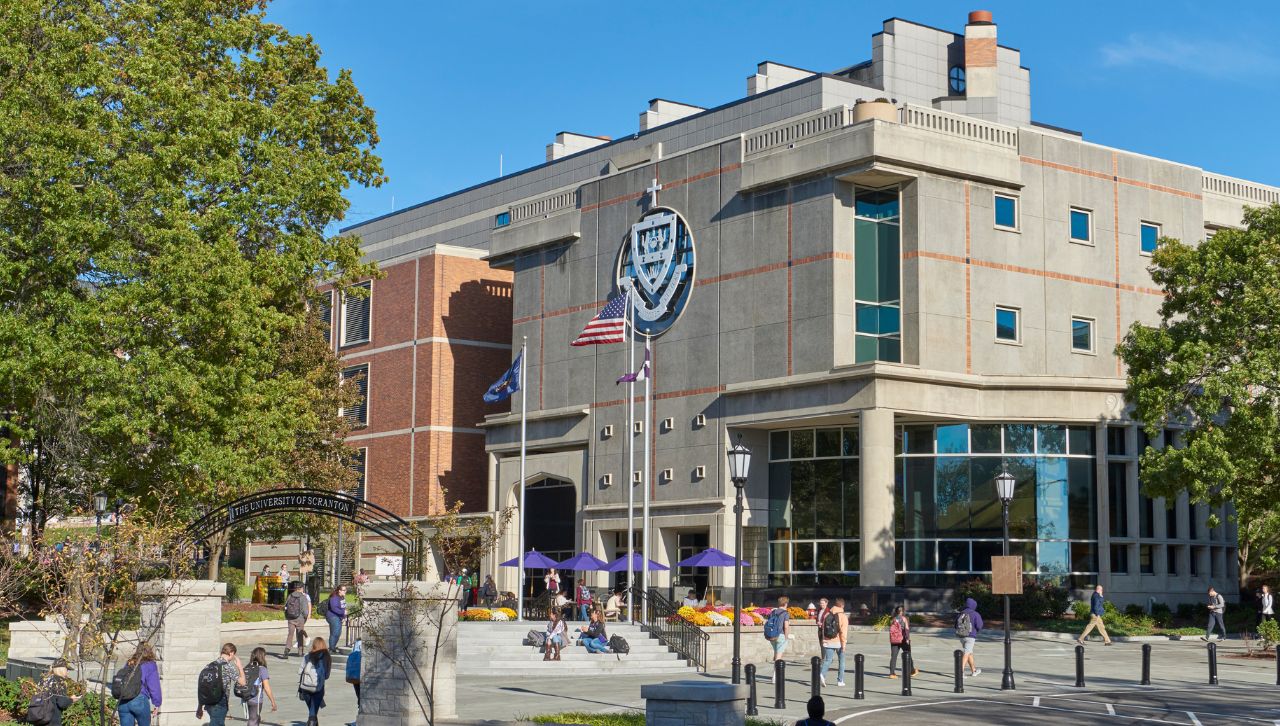
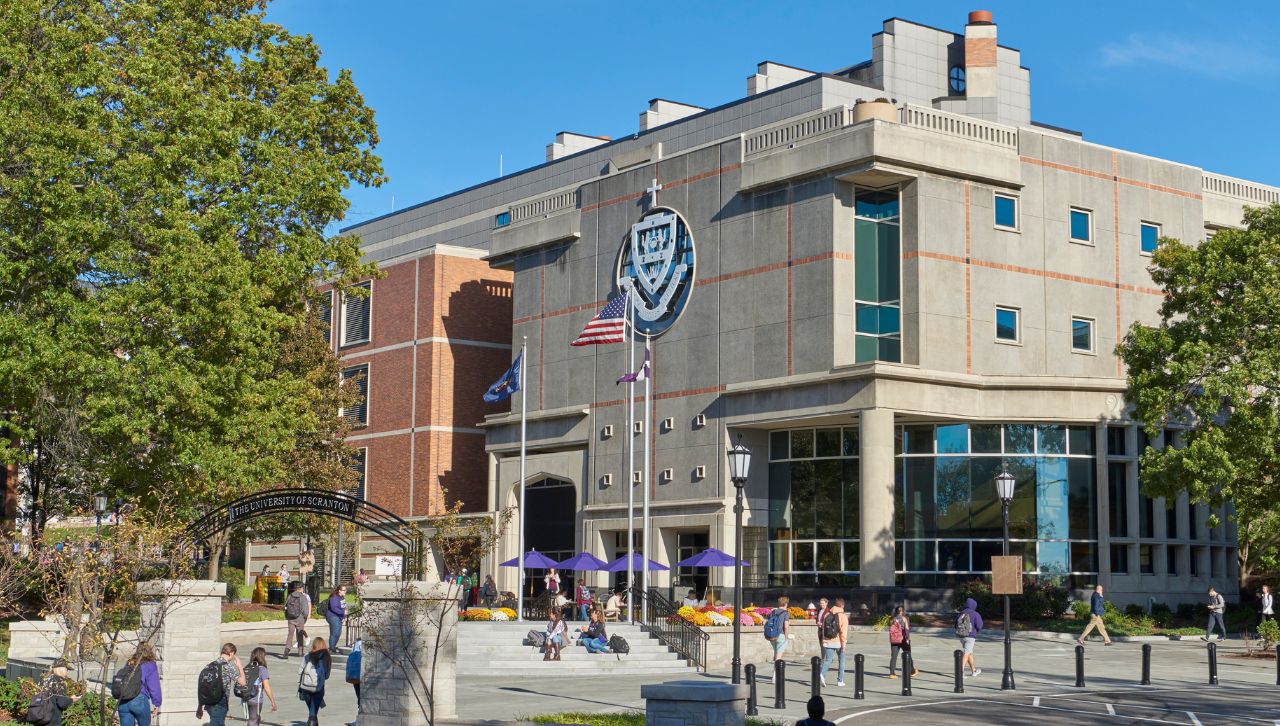
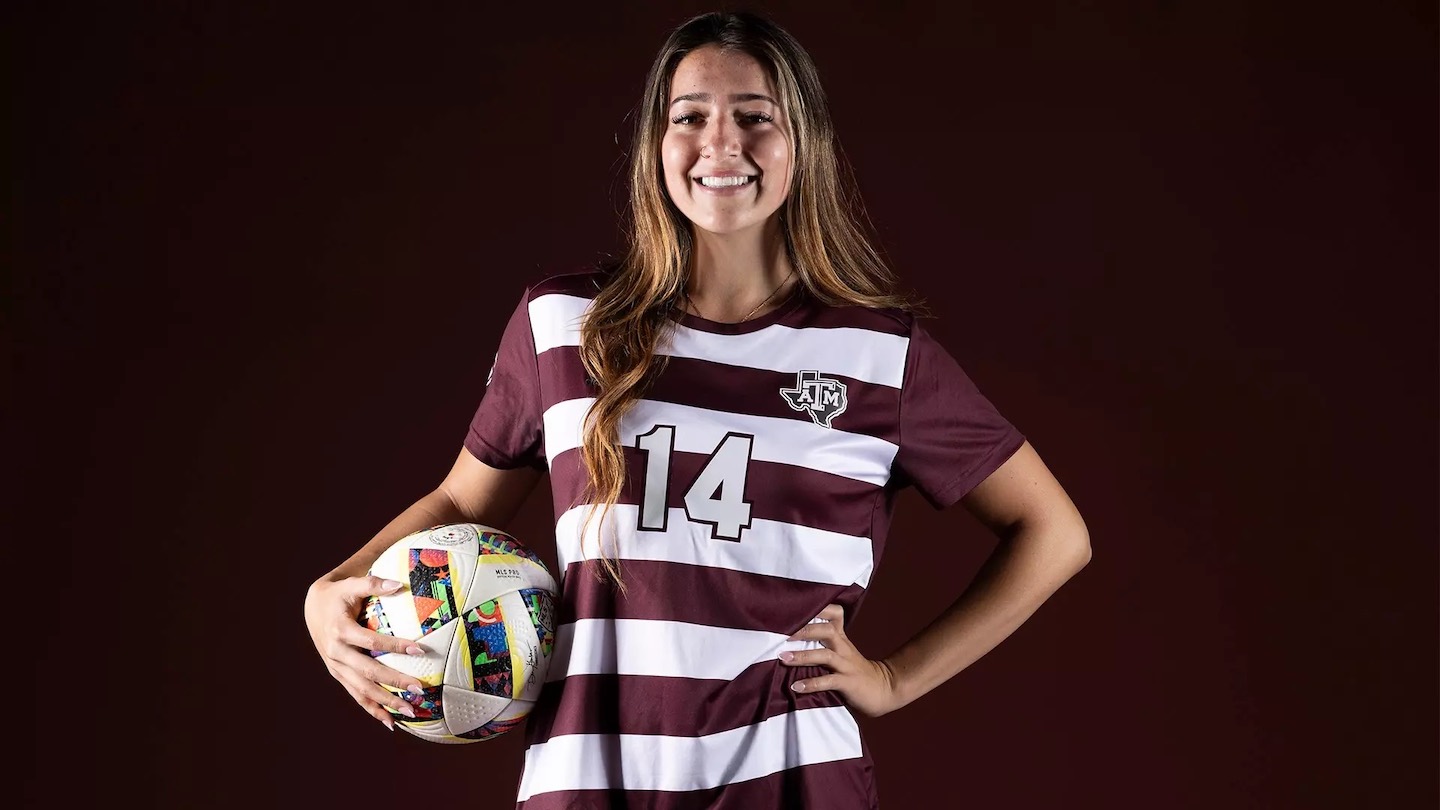
BRYAN-COLLEGE STATION – The Texas A&M soccer team bolstered its back line with the addition of former California Baptist defender Mia Scranton, head coach G Guerrieri announced.
Scranton helped the Lancers post a 0.84 goals against average and 15 shutouts the last two seasons while playing under the tutelage of current Aggie assistant coach Tim Strader. During that time Cal Baptist posted a 21-9-9 (.654) record and earned a trip to the 2024 NCAA Tournament after claiming a Western Athletic Conference Tournament title.
“We think Mia is the most talented defender coming out of the transfer portal this spring,” Guerrieri said. “She reads the game well, is a tough 1v1 defender, and is very comfortable with the ball at her feet as a creative threat going forward for us in attack.”
Scranton arrives in Aggieland with two years of eligibility. With the Lancers, she appeared in 32 matches. She racked up four career assists while playing primarily on the back line.
In her rookie campaign, Scranton played in 13 matches all off the bench, notching one assist. CBU registered shutouts in five of her 13 appearances.
Last season, the Temecula, California, native played in 19 matches. The Lancers posted shutouts in seven of her 19 matches, registering a 0.99 goals-against average.
“We just became a much more difficult team to play against with Mia on our team,” Guerrieri said. “Her experience in the college game with Tim Strader coaching her means she can comfortably step right in and understand the concepts we believe in.”
Also a standout in the classroom, Scranton earned a spot on the Fall Academic All-WAC list in 2024.
Scranton prepped at Chaparral High School and played with City Soccer Club.
-

 College Sports2 weeks ago
College Sports2 weeks agoPortal Update – Basketball and Gymnastics Take Hits
-

 Rec Sports3 weeks ago
Rec Sports3 weeks agoThe Program, a New Basketball Training Facility, Opening in Greenpoint This September
-

 College Sports2 weeks ago
College Sports2 weeks agoPortal Update – Basketball and Gymnastics Take Hits
-

 Professional Sports2 weeks ago
Professional Sports2 weeks agoJon Jones answers UFC retirement speculation as fans accuse champion of 'holding the belt …
-
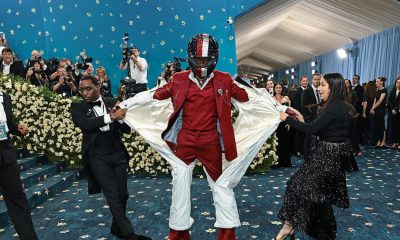
 Technology3 weeks ago
Technology3 weeks agoReal-life companies pump up promotions around fictional team in new ‘F1′ movie
-

 Youtube3 weeks ago
Youtube3 weeks agoStephen A.’s message to Draymond Green
-

 NIL7 days ago
NIL7 days ago2025 NCAA Softball Tournament Bracket: Women’s College World Series bracket, schedule set
-

 Youtube3 weeks ago
Youtube3 weeks agoTHE FINAL CALL: Golden State Warriors 2021-22 NBA Champions
-

 Youtube3 weeks ago
Youtube3 weeks agoWhen Stephen Curry Shocked The World
-

 Health2 weeks ago
Health2 weeks agoBYU women's basketball guard injures ACL twice


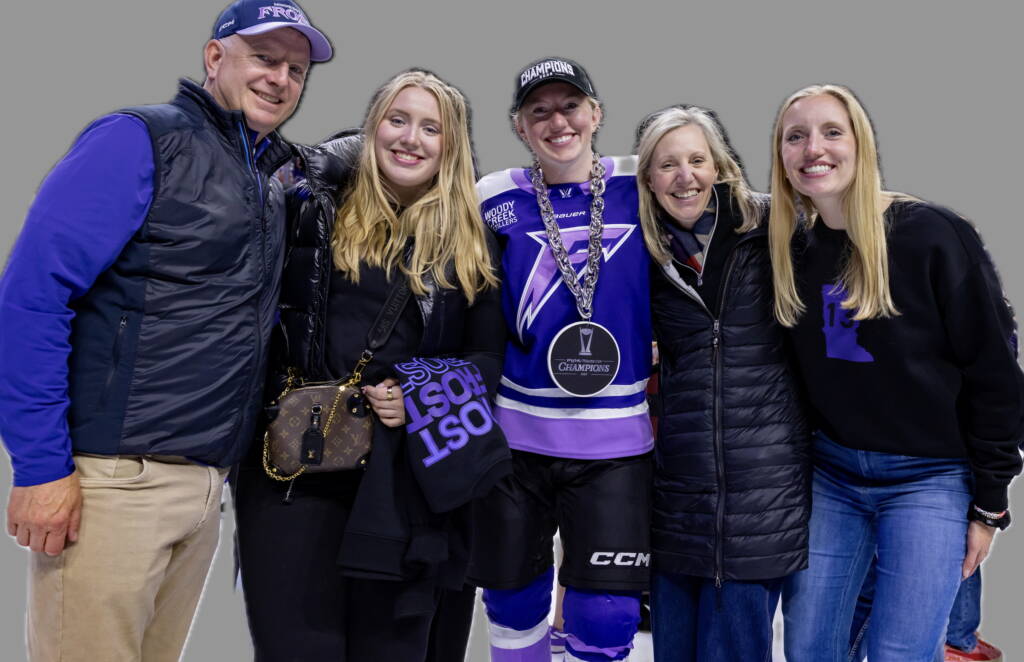














 | First Take
| First Take




















